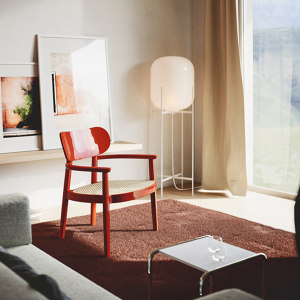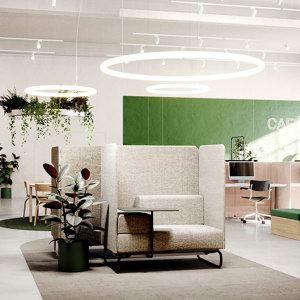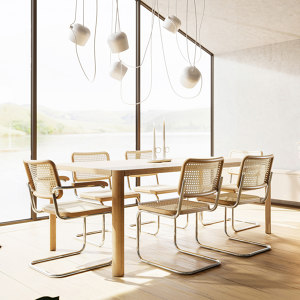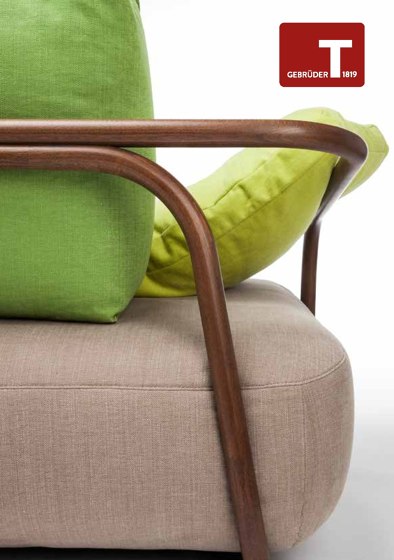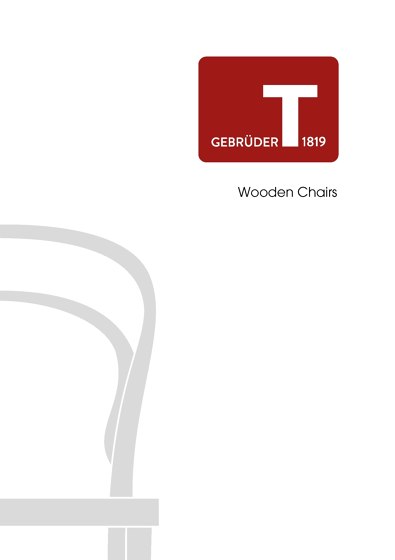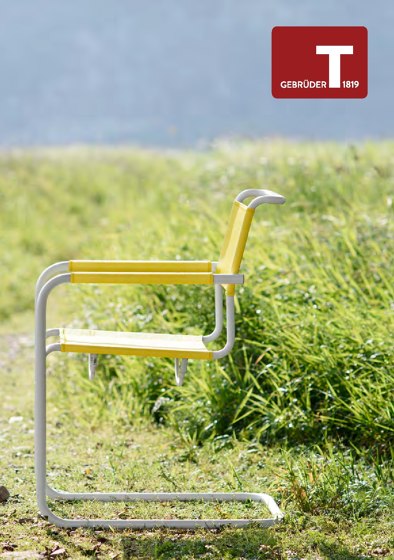About Gebrüder T 1819
MORE ABOUT GEBRüDER T 1819
Since 1819 the Gebrüder T 1819 family now in 5th generation has been producing the designs of the entrepreneur and designer Michael Thonet including the world famous bentwood chair no. 14 but also designs from Otto Wagner, Adolf Loos and other Viennese architects. At their factory in Germany later in the 1920ies the family was strongly involved in the development and first industrial production of the designs of the architects that were closely related to the Bauhaus. The furniture of Mart Stam, Marcel Breuer, Mies van der Rohe, LeCorbousier and other designers was produced in Frankenberg from the very early times.
Today we still manufacture the original designs of Michael Thonet and also the tubular steel furniture designs of Mart Stam, Marcel Breuer and Mies van der Rohe. The contemporary furniture line comprises designs from Stefan Diez, Claudio Bellini, Lievore Altherr Molina, Pierro Lissoni, Naoto Fukasawa, James Irvine and others.
The products of Gebrüder T 1819 are genuine and produced in Germany.
Since 1819 the Gebrüder T 1819 family now in 5th generation has been producing the designs of the entrepreneur and designer Michael Thonet including the world famous bentwood chair no. 14 but also designs from Otto Wagner, Adolf Loos and other Viennese architects. At their factory in Germany later in the 1920ies the family was strongly involved in the development and first industrial production of the designs of the architects that were closely related to the Bauhaus. The furniture of Mart Stam, Marcel Breuer, Mies van der Rohe, LeCorbousier and other designers was produced in Frankenberg from the very early times.
Today we still manufacture the original designs of Michael Thonet and also the tubular steel furniture designs of Mart Stam, Marcel Breuer and Mies van der Rohe. The contemporary furniture line comprises designs from Stefan Diez, Claudio Bellini, Lievore Altherr Molina, Pierro Lissoni, Naoto Fukasawa, James Irvine and others.
The products of Gebrüder T 1819 are genuine and produced in Germany.
MORE ABOUT GEBRüDER T 1819
Collections by Gebrüder T 1819
Catalogues by Gebrüder T 1819
-
2016
english, deutsch

Gebrüder T Conferencing
Gebrüder T 1819
48 pages
-
2016
english, deutsch

Gebrüder T Lounge
Gebrüder T 1819
27 pages
-
2016
english, deutsch

Gebrüder T Multifunctional Seating
Gebrüder T 1819
48 pages
-
2016
english, deutsch

Gebrüder T Overview 2015/16
Gebrüder T 1819
46 pages
-
2016
english, deutsch

Gebrüder T Wooden Chairs
Gebrüder T 1819
49 pages
-
2016
english, deutsch

Gebrüder T 1819
Gebrüder T 1819
21 pages

